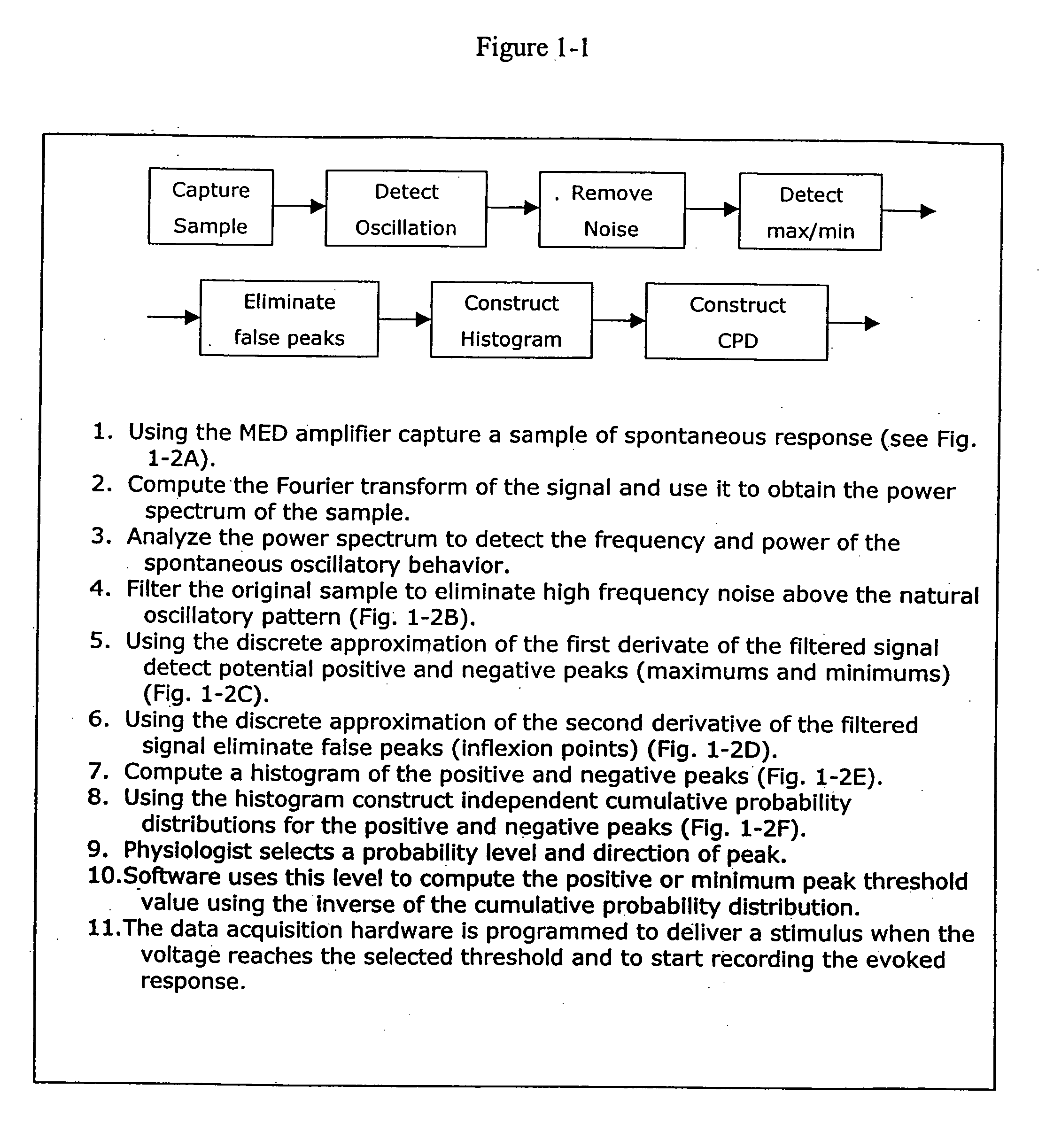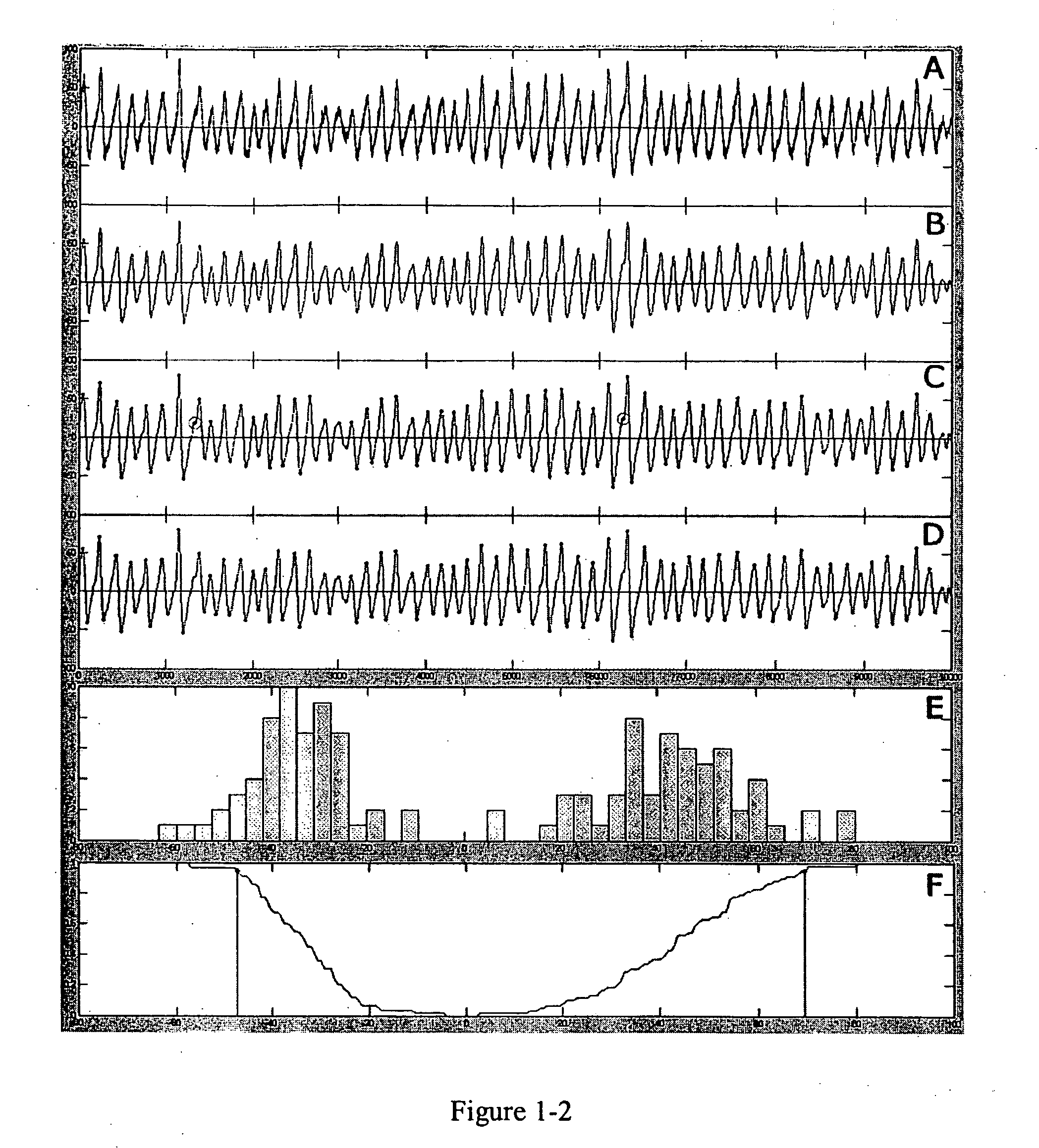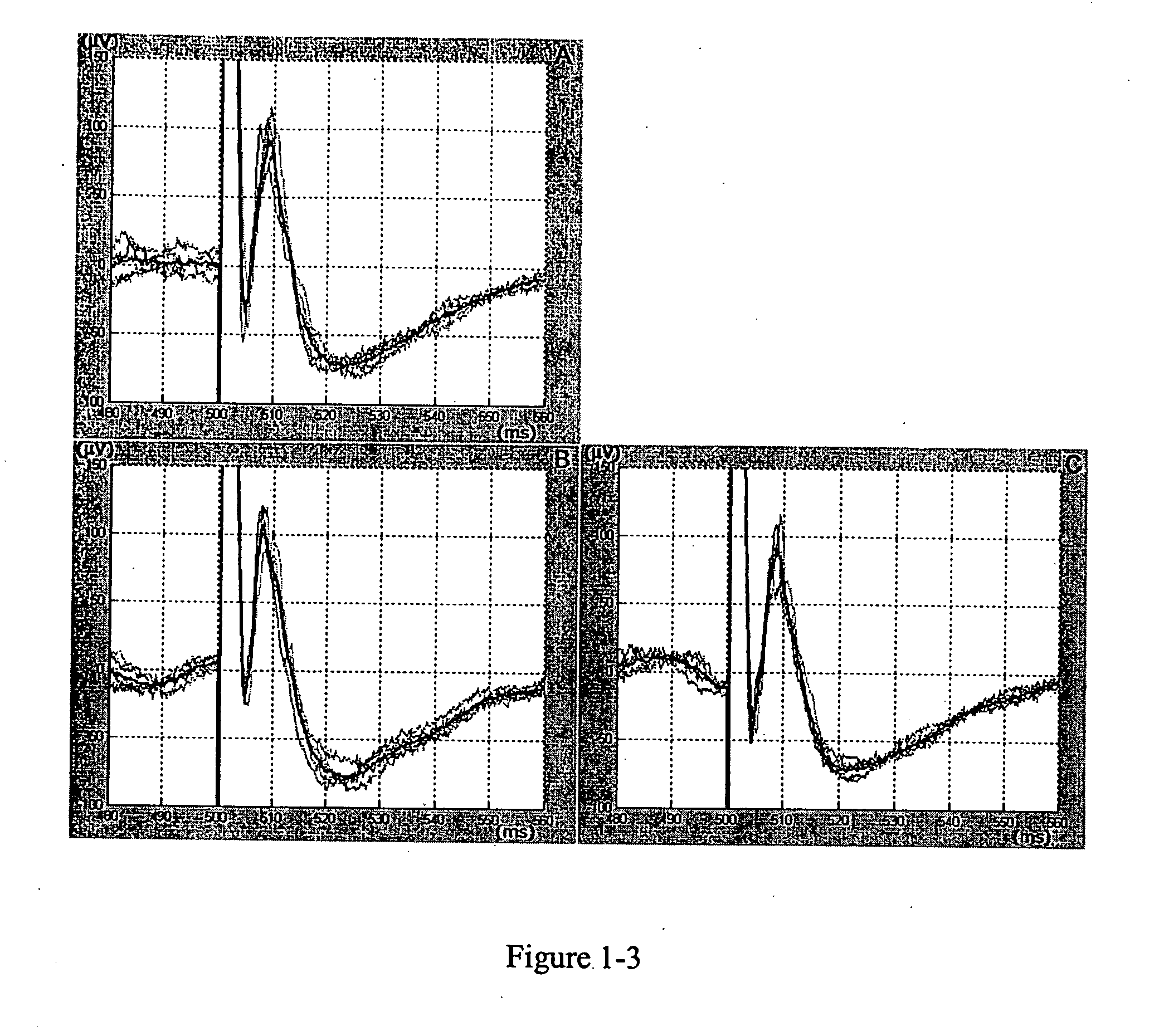Detection and characterization of psychoactives using parallel multi-site assays in brain tissue
a psychoactive compound and multi-site assay technology, applied in the field of detection and characterization of psychoactive compounds, can solve the problems of large effort to develop methods and devices, large disagreement regarding the dominant frequency of activity, and many psychoactive compounds have a relatively small probability of changing the activity of single neurons or even small groups of neurons
- Summary
- Abstract
- Description
- Claims
- Application Information
AI Technical Summary
Benefits of technology
Problems solved by technology
Method used
Image
Examples
example 1
Preparation of Multi-Electrode Array
[0071] Procedures for the preparation of the recently introduced Multi-Electrode Dish (Panasonic: MED probe) are described by Oka et al., J Neurosci Methods 93: 61-67 (1999). The device has an array of 64 planar microelectrodes, each having a size of 50×50 μm, arranged in an 8 by 8 pattern. Probes used in the experiments described below were medium arrays with 300 μm interelectrode spacing (Panasonic: MED-P530AP).
[0072] For sufficient adhesion of the slice to the probe, the surface of the MED probe was treated with 0.1% polyethylenimine (Sigma: P-3143) in 25 mM borate buffer, pH 8.4, for 8 hours at room temperature. The probe surface was rinsed 3 times with sterile distilled water. The probe (chamber) was then filled with DMEM / F-12 mixed medium, containing 10% fetal bovine serum (GIBCO: 16141-079) and 10% horse serum (GIBCO: 16050-122), for at least 1 hour at 37° C. DMEM / F-12 mixed medium is a 1:1 mixture of Dulbecco's Modified Eagle's Medium an...
example 2
Preparation of Hippocampal Slices
[0073] A 17-25 day old Sprague-Dawley rat was sacrificed by decapitation after anesthesia using halothane (2-Bromo-2chloro-1,1,1-trifluoroethane, Sigma: B4388), and the whole brain was removed. The brain was immediately soaked in ice-cold, oxygenated preparation buffer of the following composition (in mM): 124 NaCl, 26 NaHCO3, 10 glucose, 3 KCl, 1.25 NaH2PO4, 1.5 CaCl2, 0.5 MgSO4, for approximately 2 minutes. Appropriate portions of the brain were trimmed and placed on the ice-cold stage of a vibrating tissue slicer (Leica: VT-1000S). The stage was immediately filled with both oxygenated and frozen preparation buffers. The thickness of each tissue slice was 350 μm. Each slice was gently taken off the blade using a blunt-end pipette, and immediately soaked in oxygenated preparation buffer for at least 1 hour at room temperature. A slice was then placed on the center of the MED probe, positioned to cover the 8×8 array. After positioning the slice, the...
example 3
Electrophysiological Recording
[0074] During electrophysiological recording, the slices on the MED probe were placed in a small CO2 incubator (Yamato: model IC400) at 32° C. The slices remained on the MED probe, which was attached to a recording interface, and a moisturized 95% O2 and 5% CO2 gas mixture was blown from above. In this condition, responses were recorded for more than 2 hours.
[0075] Carbachol was obtained from Sigma. A carbachol solution was applied to the neuronal samples at known concentrations of either 25 or 50 μM. The lower concentration was used in all except two cases. In these two cases, the concentration was increased to 50 μM after 25 μM was found to be insufficient to induce powerful oscillations. Carbachol solutions were prepared daily from frozen aliquots.
[0076] Spontaneous and evoked field potentials at all 64 sites were recorded simultaneously with the multi-channel recording system (Panasonic: MED64 system) at a 20 kHz sampling rate. In the case of the...
PUM
| Property | Measurement | Unit |
|---|---|---|
| time | aaaaa | aaaaa |
| time | aaaaa | aaaaa |
| time | aaaaa | aaaaa |
Abstract
Description
Claims
Application Information
 Login to View More
Login to View More - R&D
- Intellectual Property
- Life Sciences
- Materials
- Tech Scout
- Unparalleled Data Quality
- Higher Quality Content
- 60% Fewer Hallucinations
Browse by: Latest US Patents, China's latest patents, Technical Efficacy Thesaurus, Application Domain, Technology Topic, Popular Technical Reports.
© 2025 PatSnap. All rights reserved.Legal|Privacy policy|Modern Slavery Act Transparency Statement|Sitemap|About US| Contact US: help@patsnap.com



